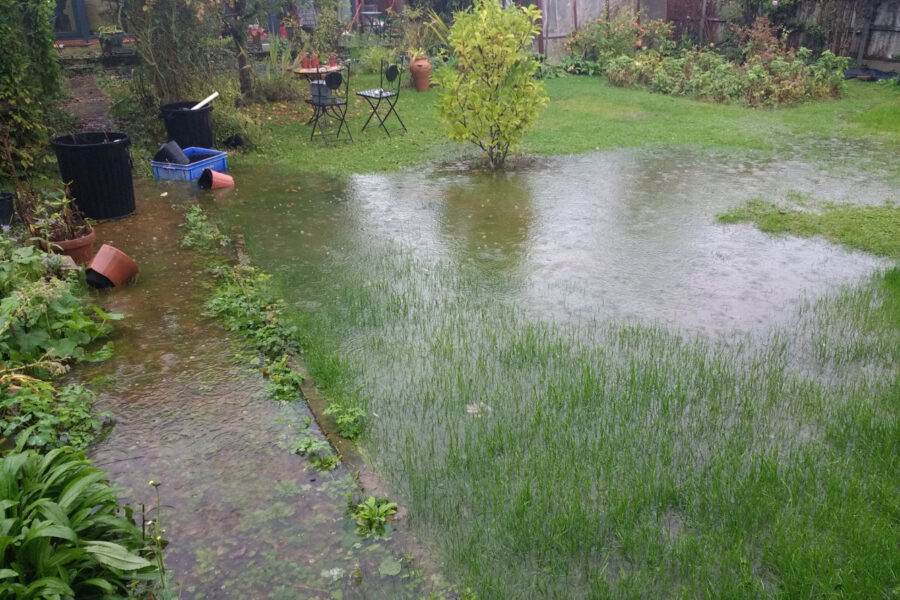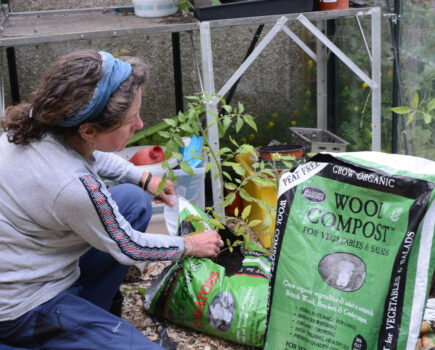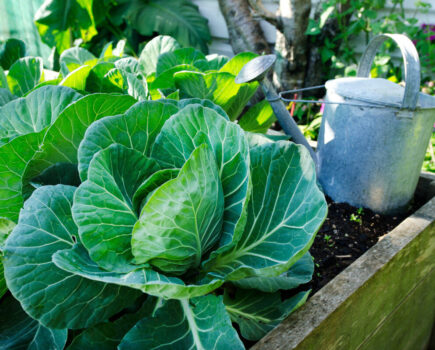Editor Kim Stoddart reveals nine ways to help shore up the defences and work with water naturally
What a few months it has been. Storm upon storm with the inevitable deluge upon deluge interspersed with extreme winds has meant our gardens have taken a fair old battering. The sheer excess of winter rain, often combined with incredibly strong storm winds, has seen a large number of trees uprooted and toppled. I know I’m writing specifically about flood proofing here, but saturated ground leaves trees more vulnerable, especially more shallow-rooted younger specimens that have yet to fully spread and root.
Toby Buckland writes wisely how some younger uprooted trees can be saved on P70, and certainly near me in west Wales many of the roads are still lined with the fallen roots of brave trees that have succumbed to brutal uprooting. It’s incredibly sad to see.
While you can’t prevent strong winds or severe flooding, especially in areas prone to such eventualities, you can help to slow, spread and sink the flow. There are ways to disperse the threat and better shore up the defences, so your garden becomes more resilient overall to the threat. I should also mention that my own gardens flooded more than a decade ago, so I know firsthand how devastating that can be. Although there is no single-handed quick fix, there are some easy-to-deploy tricks to help gardens and their gardeners cope with, and reduce the risk of, flooding.

Checking drainage channels and gutters are clear
This one act alone can make all the difference, especially for drains. When I was living in Brighton, my road flooded thanks to just one inadvertently covered drain which prevented the rain water from being able to effectively flow away. I’m not great at cleaning my gutters, it’s always one of those ‘oh do I have to?’ jobs but if you do anything, make sure that a) the water can soak away into drains in your area and b) the guttering leading from roofing into your water butts is clear. It can all make a massive difference, helping to slow a fast on-the-ground build up.
Water harvesting with neighbours

Water harvesting is such an incredibly useful thing to do, to make use of water when it is in ample supply for use during the summer months when it is not. Also, water that is being collected into a water butt or barrel can make a difference by helping to potentially avert the risk of flash flooding, which can happen fast because water cannot drain away quickly enough. Therefore the more you can capture during this time of risk, the better.
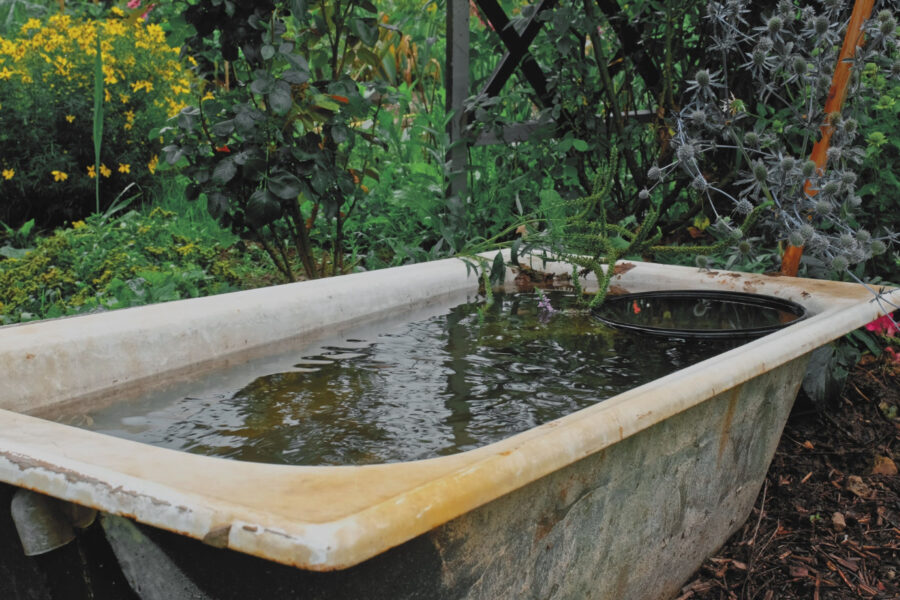
So before a storm, it’s a good idea to ensure that you are able to capture as much rainwater as you can, and hopefully your neighbours will be doing the same. Even putting out a few old bins to catch the rain can help, and there is real power in people and local action.
Think long-lasting perennial planting
The more structure there is in the ground, with plants growing deeper roots to bind the soil together, the better you are in terms of the ground’s capacity to cope with excess water. Bare soil is incredibly vulnerable to the elements because it has nothing to hold it together.
To plant wisely around the space you have available, think about layers of trees, shrubs, hedging and perennial edibles. Even consider allowing some non-invasive weeds to grow over winter, as this will all help to keep the soil in place, along with other measures outlined here which together will make your garden and the ground it sits on more resilient over all.

No-dig in beds and borders
Making the soil the best it can be is also incredibly important, and will better enable your garden to stand firm against an excess of rain. Dug-over soil will allow water to run through and away more easily, taking precious fertility with it. When my gardens flooded it was because there was a lot of rain, yes, but also because the field behind my garden has just been turned over and ploughed so its ability to absorb and hold rainwater was drastically diminished, leading to a large build of floodwater which burst through and overtook my garden.
Not digging the soil better enables natural systems below ground to prosper and helps the soil to absorb and hold more water than it would otherwise be able to cope with, and gives your garden a whole host of other benefits besides.
Mulching
Ample mulching further protects soil and boosts its water absorption abilities even further. This extra layer of protection can be provided by many readily-available materials you might already have to hand such as compost, leaf mould and wood chip.
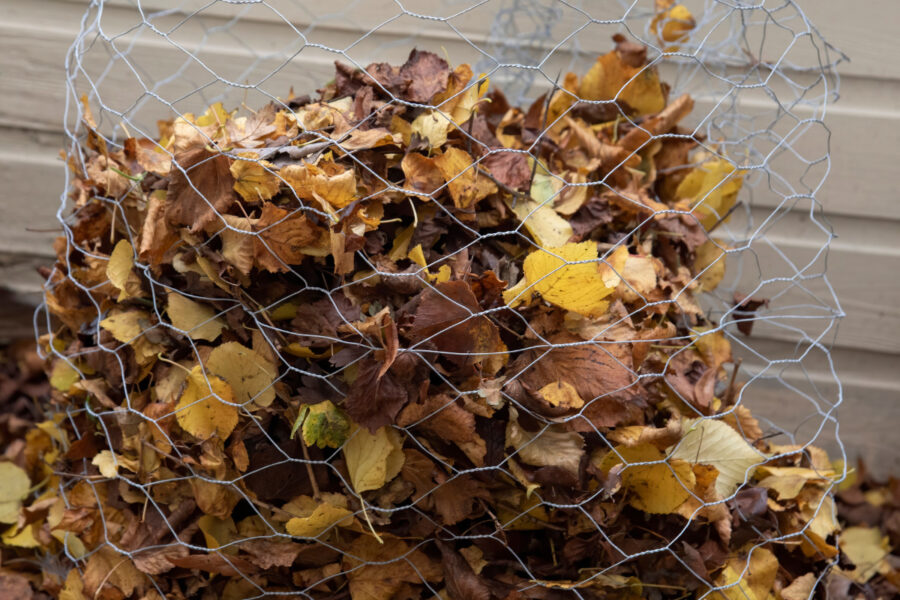
Minimise hard surfaces
Instead of impermeable surfaces, try and work with porous materials where you can, such as gravel and grass which allow water to soak through and away instead of sitting on top. If you have hard surfaced areas, consider how some form of soakaway capacity can be weaved in. From paving stones with gravel in between, or drainage rills down the side of a drive, the important thing is to factor in ways where flowing water can be slowed, sunk and spread so it doesn’t build into a flood situation.

Channel water away
There are many different ways you can channel water away. Yes, there are fancy below-ground options involving piping, but on a home garden level even the creation of a small channel dug simply with a spade and backfilled with small stones will help channel water away, thus making all the difference. It can also make it into an attractive garden feature.
Why not go a step further and create a simple rill leading to a pond so that the water serves a purpose feeding a lovely water feature for wildlife to enjoy?
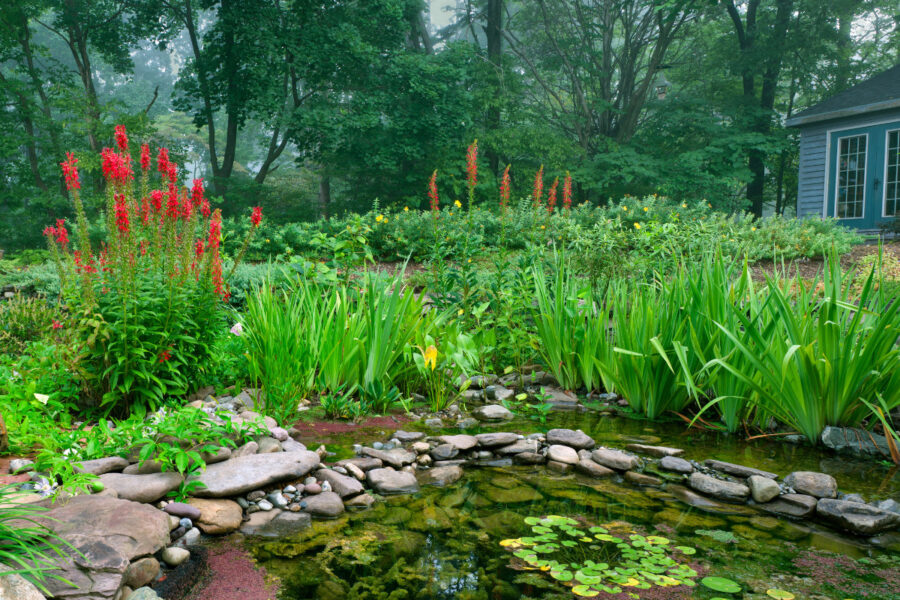
Consider creating a swale as a first line of defence
This is one of the first things I created after my garden flooded. I planted up the top of the garden area (where the water had leached through with water from the field behind) with lots of perennials – various trees, fast-growing willow and soft fruit bushes. I also let the grass grow long and regularly mulched around the bushes to better enable the ground to soak up water more efficiently.
Create more resilient pathways
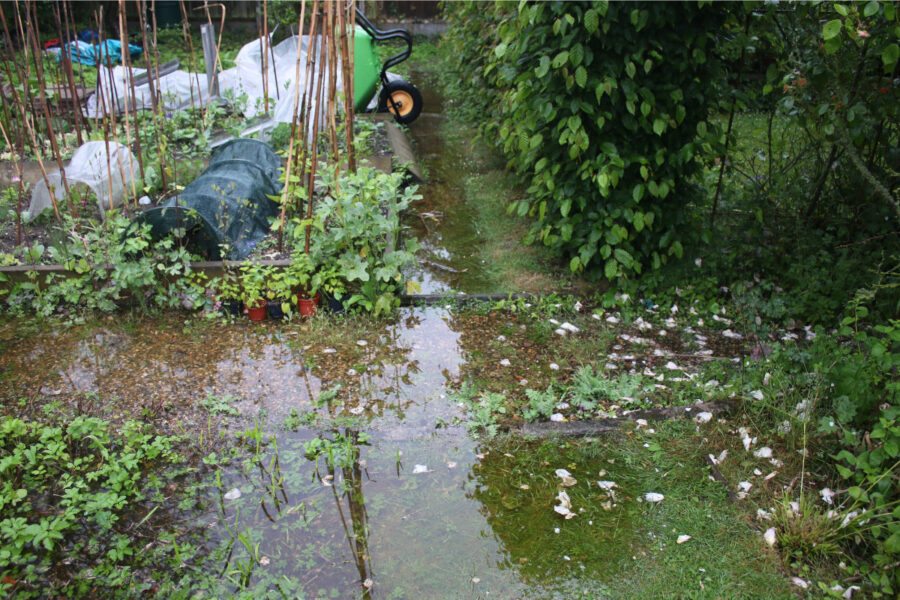
Stepping on saturated grass ground will also cause damage and quickly recreate a muddy area so I now favour gravel for the pathways most regularly used throughout the year. Combined with a porous weed membrane below ground, this enables me to safely stomp up and down whatever the season, knowing that the ground is safe and water can simply soak slowly away beneath my feet. The gravel also has the benefit of deterring slugs and snails and is very low maintenance and enjoyable to work with.
Find more tips, advice and articles like this at the Amateur Gardening website. Subscribe to Amateur Gardening magazine now

